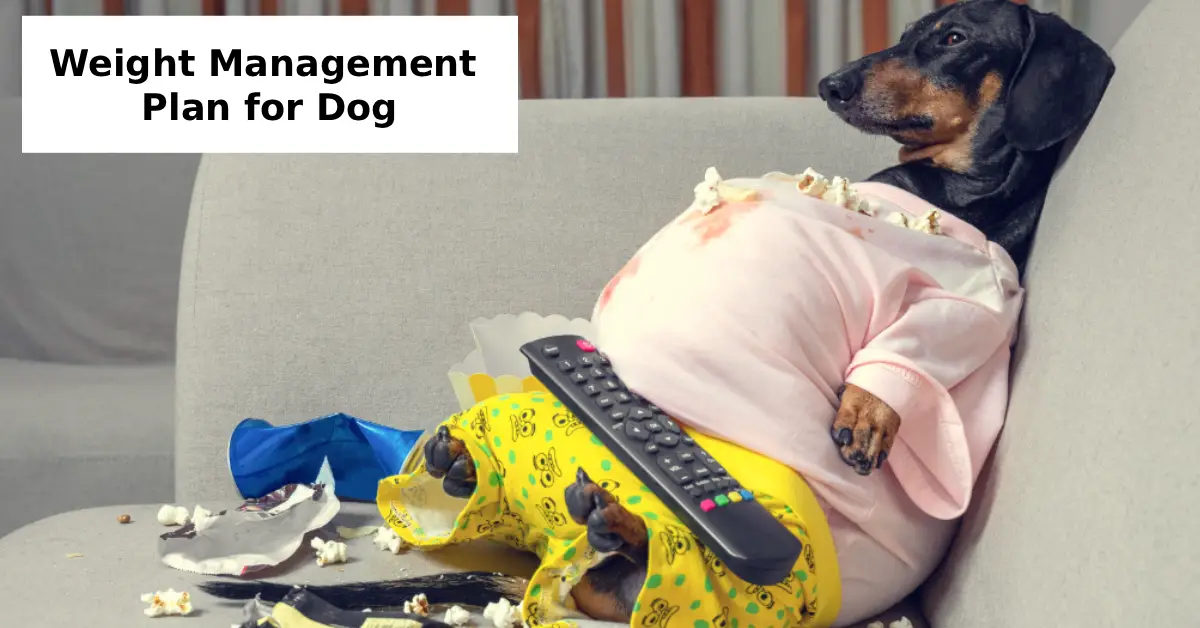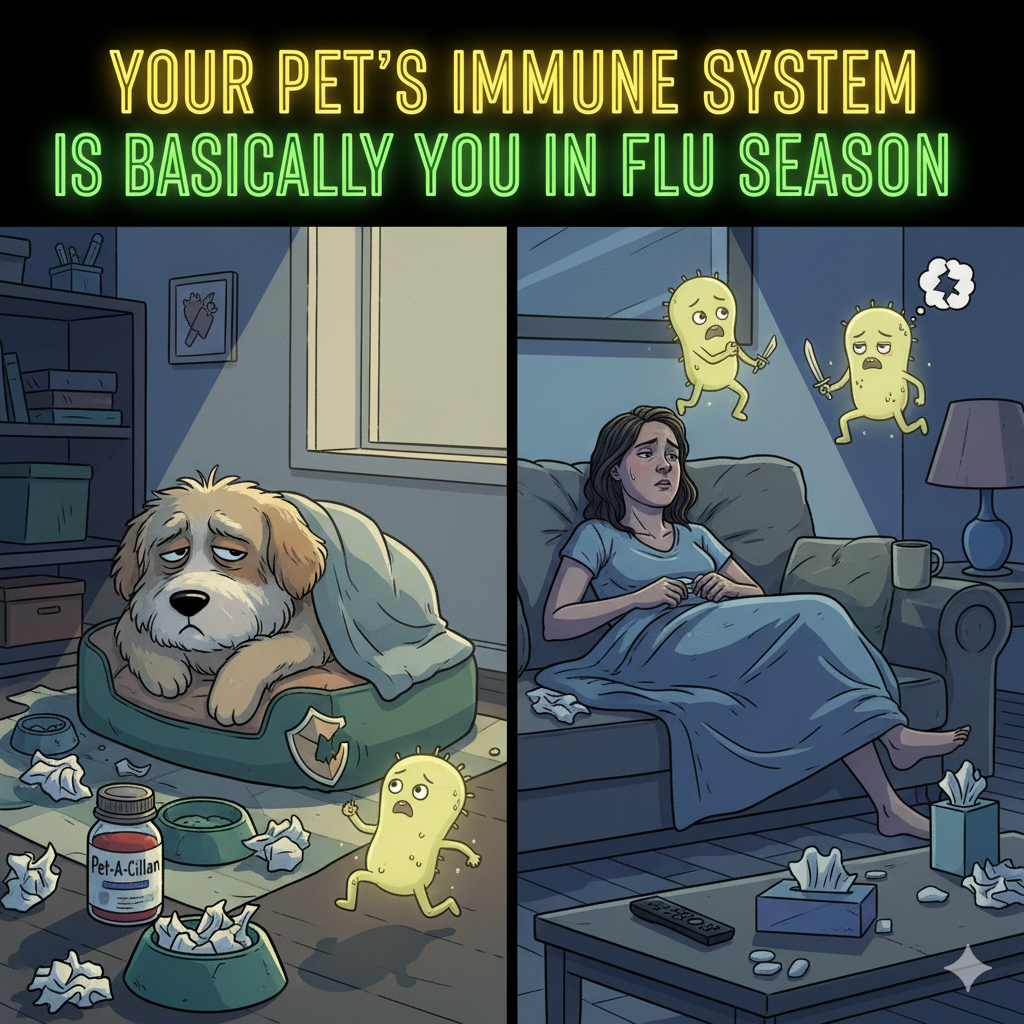Maintaining a healthy weight for dogs is essential to their overall well-being, longevity, and quality of life. For dog owners with overweight or obese dogs, building a structured and vet-approved dog weight loss plan is the first step toward improving your pet’s health. This guide will help you understand how to create a comprehensive dog weight management strategy that includes diet, exercise, and lifestyle changes — all based on expert-backed insights.
Why Dog Weight Management Is Important
Excess weight in dogs isn’t just about appearance; it can lead to serious overweight dog health risks such as diabetes, arthritis, heart disease, and even a shortened lifespan. Studies show that dogs kept at an ideal weight live up to two years longer than their overweight peers.
According to the Association for Pet Obesity Prevention, over 50% of dogs in the U.S. are overweight or obese. For first-time dog owners wanting to maintain healthy pet weight, understanding how to avoid or reverse weight gain is key to long-term pet wellness.
Identifying If Your Dog Needs Weight Management
Before starting a dog weight management plan, determine whether your dog is overweight. Your veterinarian can use a Body Condition Score (BCS) to assess this. However, you can also look for signs such as:
- Difficulty feeling the ribs under a thick layer of fat
- A rounded abdomen with little to no waistline
- Labored breathing during light activity
- Lethargy or reduced interest in play
If these symptoms are present, it may be time to explore safe dog weight loss methods that suit your dog’s age, breed, and lifestyle.
Step-by-Step Dog Weight Management Plan
Creating a successful dog weight management plan involves several critical steps. Let’s break it down:
1. Visit Your Veterinarian
Start by consulting your vet for a vet-approved dog weight loss plan. They’ll evaluate your dog’s current weight, ideal weight range, and any underlying health issues. Veterinarians offering online consultations can also provide guidance for busy pet parents.
They may run blood tests or check for common dog diseases that could be contributing to weight gain. Addressing these issues first ensures your pet is safe to begin a weight loss journey.
2. Calculate Daily Caloric Needs
Knowing how many calories your dog needs daily is essential. Most adult dogs need between 25–30 calories per pound of body weight per day. However, for weight loss, the vet may suggest cutting 20–25% of the current calorie intake.
Use a pet calorie calculator or ask your vet for exact numbers to guide your dog diet plan for weight loss.
3. Choose the Best Dog Food for Weight Loss
Not all pet foods are equal. Look for best dog food for weight loss that offers high protein, low fat, and fiber-rich ingredients. Some vet-recommended brands are:
- Hill’s Science Diet Perfect Weight
- Royal Canin Satiety Support
- Blue Buffalo Healthy Weight
Avoid feeding table scraps or high-calorie treats. Opt for healthy alternatives like baby carrots, green beans, or vet-approved snacks. Pet care eCommerce sites selling dog fitness or diet products often provide a range of healthy treats that support weight goals.
4. Set a Feeding Schedule
Dog weight control tips include creating a routine feeding schedule with measured portions. Avoid free-feeding, where food is available all day. Instead, feed your dog two to three measured meals daily using a kitchen scale or measuring cup.
5. Implement an Exercise Plan for Overweight Dogs
Weight loss doesn’t happen without activity. Build an exercise plan for overweight dogs that includes low-impact activities like:
- Daily leash walks (start with 15–20 minutes)
- Indoor fetch or tug games
- Canine swimming or hydrotherapy sessions
As stamina improves, increase the intensity and duration. This is especially useful for pet lovers living in urban/suburban U.S. areas with indoor dogs.
6. Track Progress Regularly
Weigh your dog every 2–4 weeks to track progress. Use a pet scale or weigh yourself holding the dog, then subtract your weight. Maintain a journal or app to log weight, food intake, and activity levels.
7. Adjust the Plan as Needed
Each dog is different, and weight loss may slow after a few weeks. Revisit the dog weight management plan with your vet to tweak calorie intake or activity. Slow and steady is best — aim for 1–2% weight loss per week to avoid health issues.
Tips for Long-Term Weight Control
Even after reaching the ideal weight, maintaining it is crucial. Use these dog weight control tips for ongoing success:
- Stick to measured feeding
- Keep regular exercise as part of the routine
- Avoid using treats as emotional rewards
- Schedule annual vet visits to monitor weight
For pet parents seeking vet-approved diet plans, consistency is the secret to long-term health.
Behavioral Adjustments and Emotional Support
Just like humans, dogs may eat out of boredom or stress. Keep your dog mentally stimulated with puzzle toys, chew-safe bones, or obedience training. This approach also benefits pet bloggers, trainers, and canine nutrition enthusiasts looking to enrich their dog’s lifestyle holistically.
When to Seek Extra Help
If your dog isn’t losing weight despite your efforts, ask your vet about:
- Prescription diet food
- Specialized metabolic testing
- Endocrine evaluations
You can also explore safe dog weight loss methods like supervised treadmill use or professional dog trainers with experience in canine fitness.
Common Mistakes to Avoid
- Skipping Vet Consultation: This can delay diagnosis of common dog diseases contributing to weight gain.
- Crash Dieting: Cutting too many calories can cause nutrient deficiencies.
- Overfeeding Treats: Even healthy treats add up fast if not counted in daily calories.
- Inconsistent Routines: Weight control requires consistency across all family members.
A Note on Indoor Dogs
Indoor dogs, especially those in middle-aged Americans (30–60) focused on pet wellness, may not get enough natural exercise. Be creative — use stair climbing, indoor fetch, or agility games to boost activity levels in smaller spaces.
Conclusion: Prioritize Your Dog’s Health
Creating a dog weight management plan isn’t just about shedding pounds — it’s about giving your furry friend the best shot at a longer, happier life. With a vet-approved dog weight loss plan, nutritious food, consistent exercise, and love, your pet can thrive.
Whether you’re a first-time dog owner wanting to maintain healthy pet weight or a seasoned pet lover, remember: small daily choices make a big difference. Start your journey today and support your pet’s well-being every step of the way.





